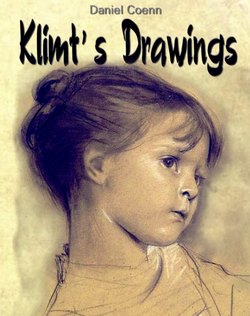Читать книгу Klimt's Drawings - Daniel Coenn - Страница 2
На сайте Литреса книга снята с продажи.
Foreword
ОглавлениеDrawings played a major role in Gustav Klimt's artistic development. From sketches and preparations for oil paintings, to erotic drawings and portraits, the present collection illustrates the full range and depth of Klimt's abilities as a draughtsman.
Klimt's talent and brilliance as a draughtsman, however, was widely recognized only after Klimt's death. During his lifetime, he hardly sold a drawing nor did he exhibit them. Although known for his perpetual sketching and drawing and his need for this essential activity, Klimt was astonishingly nonchalant about these works. The casualness with which he treated them shocked the critic Arthur Roessler when visiting Klimt: "As I rummaged around in a heap of hundreds of drawings, surrounded by eight or ten mewing and purring cats playfully chasing each other about and making sketches... fly... I asked in surprise why he put up with them ruining hundreds of the most beautiful drawings in this way. With a smirk Klimt replied: 'It doesn't matter if they crumple or tear a few sheets - they piss on others, and, don't you know?, that's the best fixative". This visit took place before 1904 and it appears that Klimt grew more responsible about his graphic work around 1906. This is around the time when he started using the expensive simili-Japan paper and introduced color into his drawing.
The controversial faculty paintings for which he was commissioned in 1894 - Philosphy, Medicine, Jurisprudence and Law - give excellent examples of how Klimt expressed even the most abstract, and complex ideas through the means of a female body: "Woman is the major creation" he famously asserted.
Klimt, who executed his last male portrait in 1899, almost only painted women and displayed a voyeuristic fascination with woman as "the Other", which for him became the representation of life. Servaes recalled of his studio and working method: "Here he was surrounded by mysterious, naked female creatures, who while he stood silent in front of his easel, strolled around his studio, stretching themselves, laying around and making the best of the day - always ready for the command of the master obediently to stand still whenever he caught sight of a pose or a movement that appealed to his sense of beauty and that he would then capture in a rapid drawing."
"Klimt was conceivable only in Vienna (or) better still in Budapest or Constantinople ..." wrote the Austrian colleague Anton Faistauer after Klimt's death. "His entire spirituality is oriental. Eros plays a dominant role, his taste for women is almost Turkish... Klimt never looked westwards and with the exception of a journey to Spain and to Paris was never interested in Western culture... Klimt's personality was the same as his work... He loved the good life and peace and quiet like a true oriental and looked like one, too."
Gustav Klimt's drawings are among the finest creations in the artist's oeuvre. This is particularly true of Klimt's later years, when drawing became in many ways, the key area of his artistic exploration. From sketches and preparations for portraits, to erotic drawings and studies for many of Klimt's late masterpieces, the drawings in this collection illustrate the full range and depth of Klimt's outstanding ability as a draughtsman. As such they present a remarkable insight into the intimate world of drawing with which this enigmatic and brilliant artist surrounded himself.
Klimt's brilliance and originality as a draughtsman was only really recognized after the artist's death because during his lifetime Klimt hardly ever sold his drawings and never thought to exhibit them. For Klimt, his drawings represented a private world in which he increasingly explored his own obsession with the woman and his notions of femininity. Indeed, many of Klimt's drawings have still never been seen in public because they entered into a private collection directly from the artist and have remained there ever since.
